This week in Brit. Cinema, we discussed escapism as an alternative to the “documentary-realist” films made during WWII. Most studios were making film upon film about the war to remind people of what war was really like, despite audiences experiencing such events with a much more heightened sense of reality than the film business could portray. But one British studio provided escapism in bulk. Gainsborough Pictures, the former sister company of British-Gaumont became famous for producing lavish, saucy costume dramas that were aimed at a female audience and were often adapted from recently published romantic novels. Founded by Ealing’s Michael Balcon, Gainsborough also employed some of the biggest stars of the 1940s, including Margaret Lockwood, James Mason, Stewart Granger, Phyllis Calvert and Patricia Roc.
The films produced at Gainsborough during and shortly after the war were some of the most financially successful of their time. They were also panned by critics who thought them the antithesis of everything they wanted British film to be. The main ingredients prevalent in these films that was missing from the realist films of the time were sex and heightened emotions. What Gainsborough melodramas lacked in “quality” traits like stoicism and restraint, The Wicked Lady, The Man in Grey, Fanny By Gaslight, Jassy and other similar titles more than made up for it in sex appeal, strong female characters, nostalgia and fantasy:
In short, the traditional British social rulebook had been torn up, and Gainsborough responded to these developments in two quite distinct ways – by making films exploring women’s lives both during wartime and afterwards, and by creating shamelessly escapist fantasies, usually set in the distant past, that offered powerful images of female independence and rebellion that resonated deeply with audiences of the time. (screenonline)
Arthur Crabtree’s 1944 film Madonna of the Seven Moons is a fanciful story of a pious young Italian woman named Maddalena (Phyllis Calvert) who, as a young maiden, is raped in the woods by a man who looks like he’d jumped straight out of an FBI’s Most Wanted poster. Maddalena is taken in by the nuns at a local convent where she becomes the picture of virtue before being handed over in marriage to the wealthy Guiseppe Labardi. Flash forward twenty years and Maddalena is still mentally scarred by the incident in the woods. The return of her daughter Angela (Patricia Roc) from school in London triggers a long-kept secret. Maddalena periodically develops amnesia and disappears to Florence where she lives a double life as Rosanna of the Seven Moons, a free-living gypsy who has a torrid love affair with a jewel thief named Nino (Stewart Granger). Maddalena/Rosanna is never aware of her alternate personality, and, when asked, can never produce an answer as to where she’s been. When Angela goes searching for her mother, she is assisted by Nino’s brother Sandro (Peter Glenville) whose intentions for Angela are sinister. Angela’s ignorance of the situation eventually leads her to her mother, but puts Maddalena/Rosanna’s life in danger. As is the custom in classic films–to a lesser extent in Britain compared to the Hollywood Production Code, but still true none the less–bad girls are ultimately punished for their misdeeds, no matter how virtuous they may have been otherwise.
While I didn’t think the film was as ridiculous or as unintentionally funny as The Wicked Lady, it was still very strange. However, there were some things that stuck out for me:
1) The fact that Stewart Granger never buttoned his shirt. It’s true that Granger was the male sex symbol of the moment, and my guess is that Arthur Crabtree wanted to showcase his chest to distract viewers from his silly court jester costumes. Or maybe not.
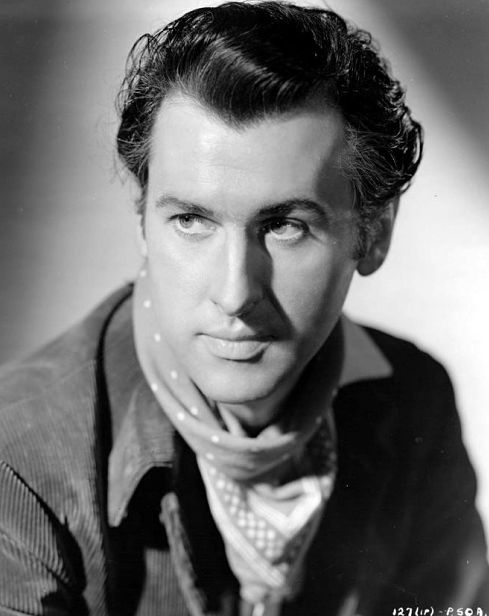
2) Patricia Roc’s hair and her entire wardrobe.
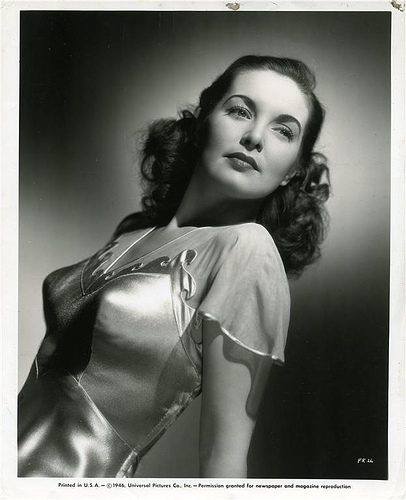
The BFI’s Monthly Film Bulletin said of the film:
Artistic settings beautifully photographed are a pleasing feature of this lavish production, but they cannot disguise the crude melodramatics of the story nor the fact that the film drags, despite its bursts of robust action. The players act well to a certain degree and yet they somehow fail to give convincing studies of the Italian characters they are meant to portray.
Actors failing to portray–in any way, shape, or form–the actual nationality of the character they are playing is the bane of many classic films. But perhaps there is an inherent suspension of disbelief when we watch a film like Madonna of the Seven Moons today. Not only is the story set far in the past, but the passage of time from when the film was initially released to today also aids in this. Maybe we have come to expect this sort of thing from older films? I can think of plenty examples of actors in classic films not even trying to put on a different accent as required by the character they were portraying (Clark Gable in Gone with the Wind, anyone?), but it usually doesn’t affect my overall enjoyment of a film. Where Madonna really fails is in the plot. It’s about as bizarre as the theremin that periodically pops up in the soundtrack to signal Maddalena’s transformation into Rosanna…or aliens coming to inhabit 18th Century Italy.

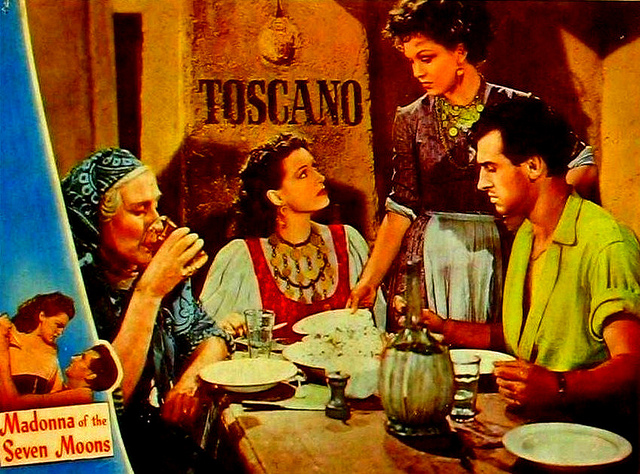


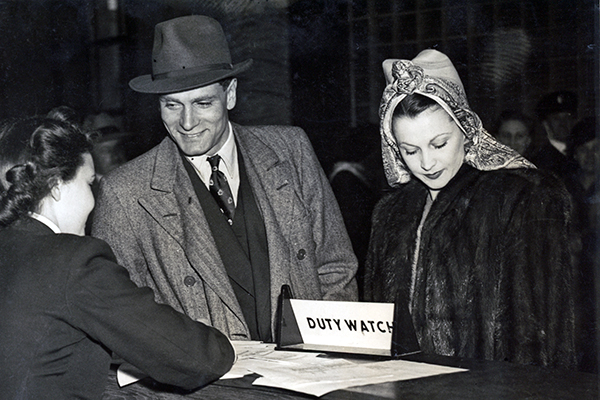


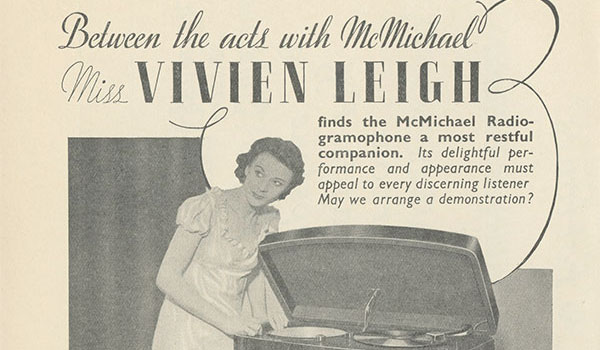
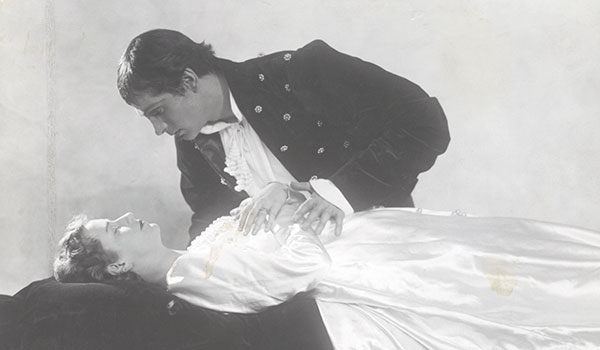
I’ve never seen this movie; this comment of yours intrigues me since I ‘m from Italy and am pretty curious to see what Gainsborough pictures made of an Italian setting.. anyway I think that many of these melodramas are still fascinating , it’s too bad “Fanny by gasllight” it’s impossible to find . is it true metro destroyed all copies of this picture when they planned the Hollywood remake starring Ingrid Bergman?
maybe I got confused and “Gaslight ” and “fanny by gaslight” are two different movies, but , just the same, I’ve never been able to find either ..
The British version of Gaslight and Fanny by Gaslight can both be seen on Youtube.
Were the gainsborough escapist films only set in a faraway time/place, or did they also produce films set in the current period that just completely ignored the war? Or was the greater differentiation simply their melodramatic style?
Yes , some are in contemporary times. I never thought that this film, MADONNA OF THE SEVEN MOONS dragged , and I found it very interesting. I love also WICKED LADY and I didn’t think that it was amusing plus it is based on a true story. I found her courage impressive . I have always thought that critics were just that !!! Too critical albeit I admire Kendra Bean because Vivien Leigh is my favorite actor. Period !!!
@matilde– Gaslight starring Ingrid Bergman and Charles Boyer is a totally different film. It’s shown periodically on TCM, but I’m not sure how widely available it is outside the US
@meredith–Actually, they produced some films during the war that were about the war, such as Millions Like Us and We Dive at Dawn. Today they’re best remembered for their costume melodramas, though. Sue Harper has done a lot of writing about them
Interesting! Thanks.
My mother loved this movie! It’s on my list to see. As for Stewart Granger – he’s shirtless in so many films! In “King Solomon’s Mines” the contrast is very amusing between Granger – always with some muscle showing – and Richard Green – always buttoned up.
It’s pretty ridiculous so don’t hold out for a “serious” film. Bless Stewart Granger and his shirtless, overly tanned self, haha 🙂
I’ve never seen the film ‘Madonna of the 7 Moons; but I remain intrigued. In the late 60’s, when I was young and beautiful, a well-known jewellery Designer, long passed on, designed the only pair of mysterious large gold gypsy earrings for me (he never designed earrings) saying I reminded him of the lead in Madonna of the 7 Moons – whom he had worshiped all his life (even his 2nd wife looked like her!)
I am now in my seventies – but I still wear my favourite earrings depicting 6 moons in the 7th ring – and when I wear them, people still comment and say “My, but you are looking good!”
I was named Rosanna (of the Seven Moons) by my mother in 1951 only now do I see where it came from.
Hi Rosanna,
My mother said she named me Madonna after the same film, I’ve never understood that. Got any ideas???
Rosanna song from MADONNA PROBABLY THE MOST BEAUTIFUL MELODY EVER WRITTEN YET I KNOW OF ONLY TWO RECORDINGS
I was named Rosanna after the character in this film. Stewart Grainger was my mother’s heart throb at the time.
I am very disappointed in the review of this film. I felt that it was unfortunate and untrue. It’s a terrific film and I can find no fault with it. I loved looking at Stewart Granger ‘s open shirt and his showing male cleavage !! He was gorgeous and very sexy. I found the actors excellent, and I hate the unnecessary and painful ending and again for the critic saying that she had to pay for her crime. Her crime for what. She couldn’t help having a mental illness as a victim of rape !! I do think that perhaps the critic may agree with me
I would love to find the book to read and I am going to order this film. And I would also recommend that the critic leave out that the film is for women because it may deter men from seeing a wonderful film. I have a lot of male classic film lovers who love this movie !!!